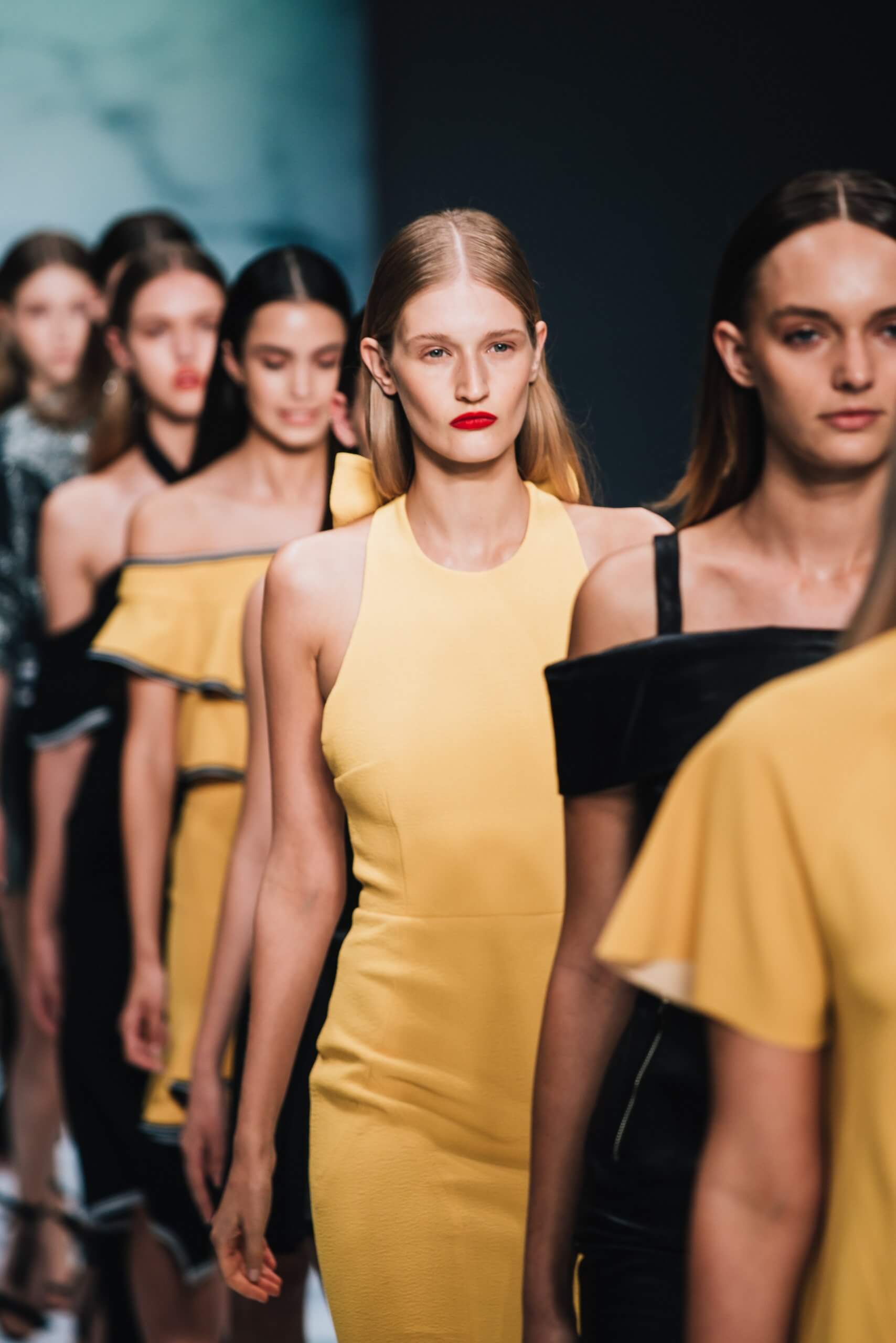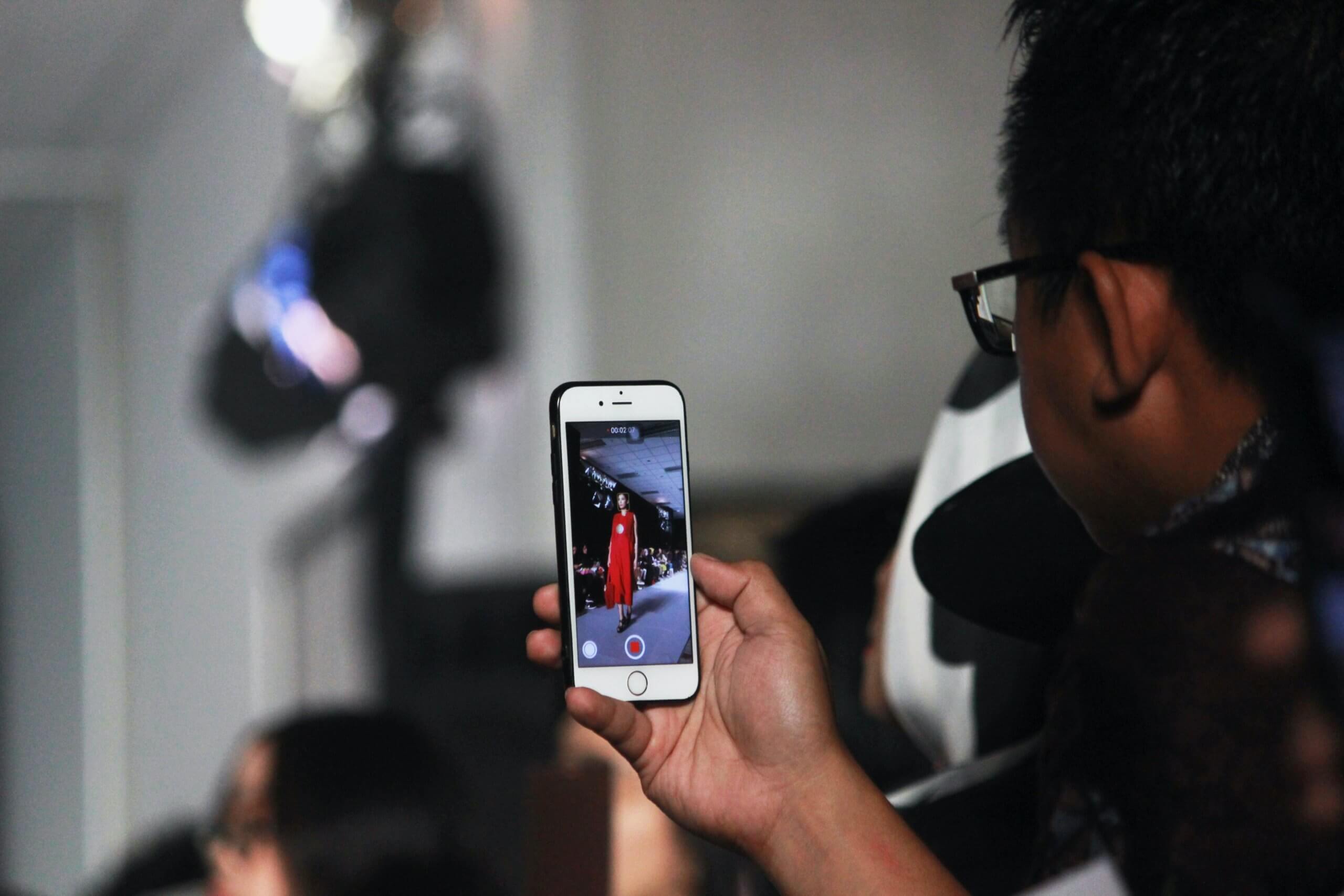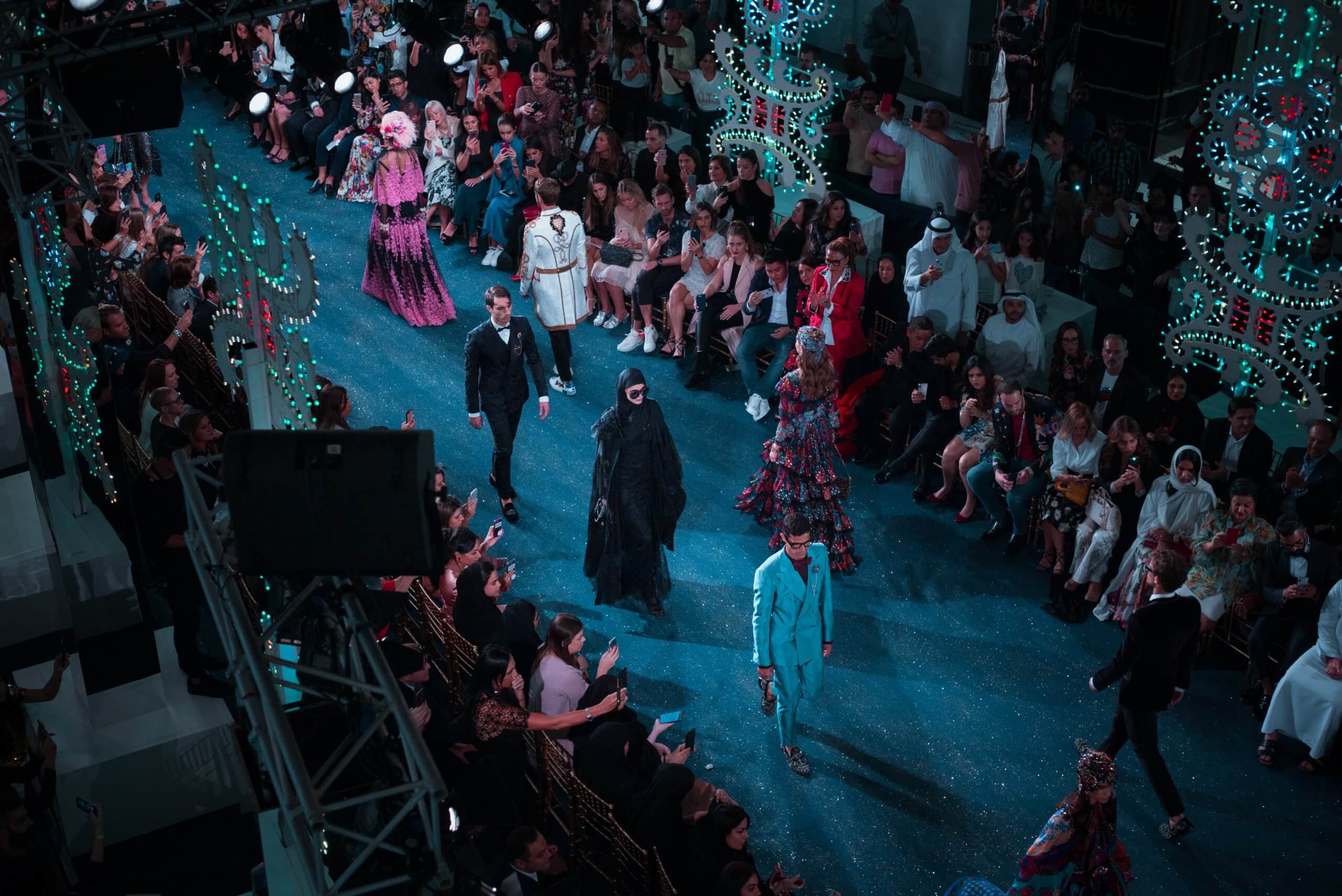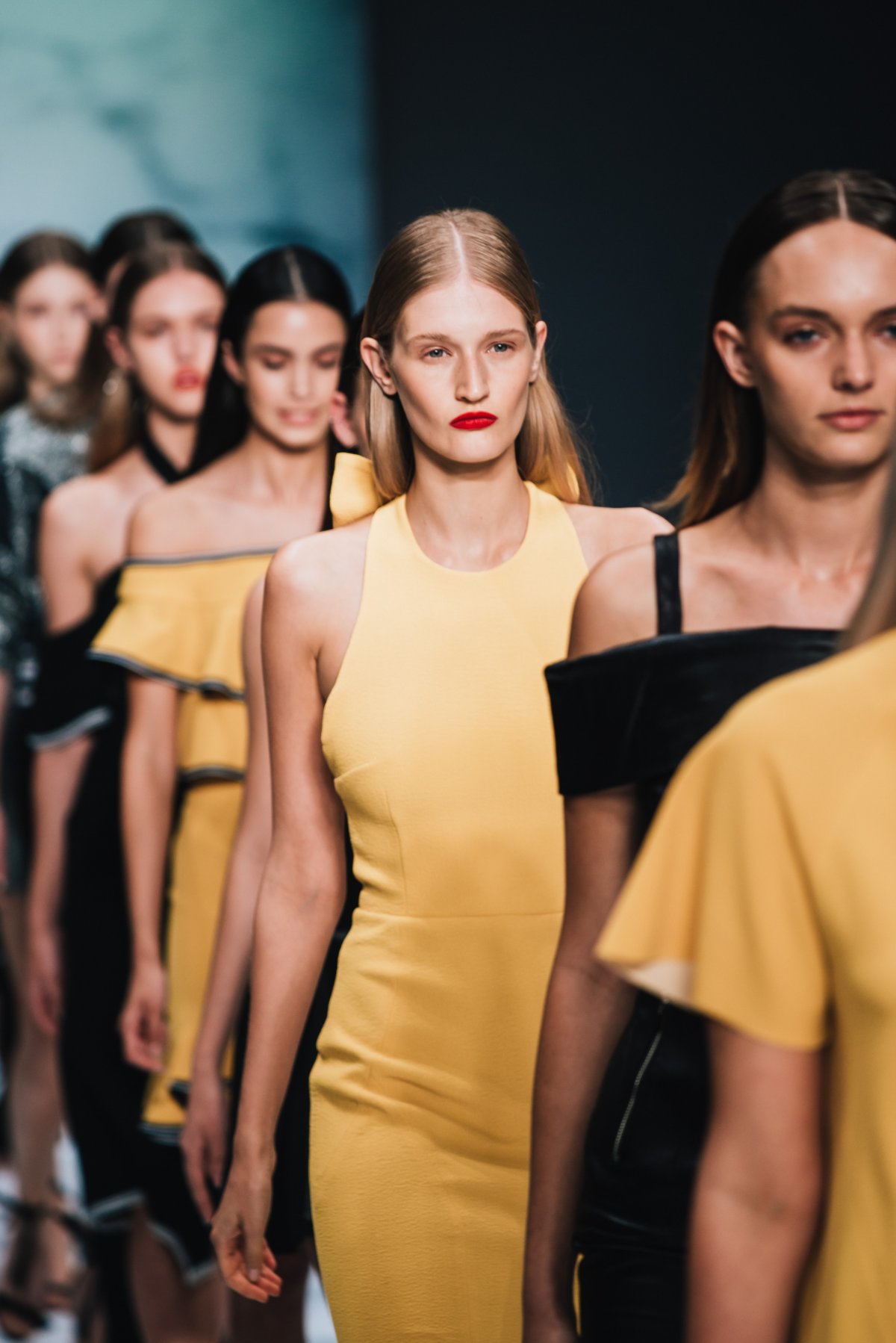As the pandemic lingers on, and our concept of time continues to become warped, we surprisingly found ourselves approaching that time of year again: New York Fashion Week. NYFW is important because, not only does it allow American designers to show off their collection and bring their vision to life, but it also sets the trends for the coming season. Those trends then trickle down from the runway, to the sidewalk, to mass retailers. Completely molding the way we dress for months to come. New York Fashion Week may have looked a bit different this year with stay-at-home orders and government restrictions, but like New York itself, fashion week was certainly not ready to sleep.

It’s a Little Different…
Even though New York remained partially in lock-down with COVID-19 still looming, the show had to go on. NYFW persevered with an almost entirely digital lineup. After dealing with the impact of the pandemic for almost a year now, this was something I think most of us suspected would take place. However, you can always expect some surprises no matter what. That’s just what life is about. Even surprises as shocking as fashion icons, like Ralph Lauren, Marc Jacobs, Tommy Hilfiger, Michael Kors, and Calvin Klein being noticeably absent from the schedule.
How could they abandon us?!
Not only that, this year, fashion week isn’t concentrated in a week. It is actually shaping up to be a month-long experience with numerous collections from designers like Carolina Herrera, Coach, and Christian Siriano showcased later this week and Jonathan Cohen delayed as late as April.
Okay, seriously. What is going on…
Over the past year, buying habits of consumers have transformed drastically, and designers are rewiring all aspects of their business to adapt to the changing times. Many fashion designers are choosing to showcase their collections post-fashion week with the intent of maximizing more in-season selling, to tighten the gap between their collection appearing on the runway and in retail stores. So I’ll give them a pass, I guess.

More Than Just the Runway
In the last several years, shows have been slowly moving online, and you could get an equally good (or better!) look at the runway collection in online videos, without the flock of paparazzi and oh-so-comfortable shoulder-to-shoulder seating. With the introduction to travel bans and other health and safety challenges, the pandemic only accentuated this trend. What’s really cool though, is fall-winter ’21 NYFW gave a different from digital fashion insight with many designers opting for short films or other creative presentations in place of live shows. There were also a handful of physical showrooms as well, like with the Black In Fashion Council’s event featuring 16 emerging Black-owned brands. Some designers like Victoria Beckham even opted for look books and still others presented their collection with social media-based videos.
Breaking Barriers with Social Media
In my opinion, my favorite part about incorporating social media into fashion week is that I can enjoy a front-row seat from the comfort of my couch. As Fashion Week continues to distance itself from being an exclusive insider-only event, it gives anyone with a screen the opportunity to experience the magic by streaming the shows. I personally enjoy tuning in and acting like I am someone of high status. It also allows the collections to bypass retailers and go directly to consumers as well.
Fall-winter ’21 NYFW embraced today’s modern technologies and pathed a path for more creative, digitized fashion outreach that will definitely not be left behind in a post-pandemic world. Notably, IMG, International Management Group, teamed up with TikTok to create #TikTokFashionMonth – which provided content from New York Fashion Week such as live-to-tape runway shows, look book shoots, panel discussions, talks, social activations, and e-commerce. Breaking even more barriers, American fashion designer, Rebecca Minkoff, generated major buzz when she created an OnlyFans account ahead of NYFW. OnlyFans is a content subscription service where creators can earn money from subscribers, usually involving NSFW content. Minkoff’s subscription had no cost and was used to share behind-the-scenes material from her latest collection and a look into her entrepreneurial journey in the fashion industry. Genius.

Can Things Go Back to Normal?
Overall, the virtual NY Fashion Week did a phenomenal job at encouraging designers to adapt innovative ways to present their fall collections. Brands were even able to tell their stories to a larger audience perhaps better than in the past. In many cases, the videos were captivating and allowed the clothes to be presented actually in a better viewpoint than that on a runway by offering a closer look at fabrics and details of each piece. Not only that, it opened the opportunity for the collections to bypass retailers and go directly to consumers.
On the downside, it is very difficult to accurately capture the experience of an in-person show. The hustle and bustle, the anticipation, the shared experience, the conversations. Presenting a virtual collection to the public is challenging because of the inability to truly connect with the audience and perfectly execute an accurate understanding of the overall intimacy of the collection through digital mediums. I can guarantee you will have a different connection to clothes, fashion, and experience when seeing a show in person. Let’s still make it a thing, okay? Please.

Introducing New, Young Designers
Although virtual shows and lookbooks might have felt a little different than traditional Fashion Week runways, that doesn’t mean that weren’t entertaining and worthwhile. In fact, the virtual runway shows may have presented an opportunity to fit more designers and brands into your viewing schedule. Not only that but with many of the larger designers like Oscar de la Renta, Carolina Herrera, Altuzarra, and Thom Browne pushing back their virtual presentations until later in the season or not participating, it allowed younger, emerging designers to make their big debut this week. Some new and young designers like Kimberly Goldson, Proenza Schouler, Jason Wu, Jonathan Simkhai, Zimmermann, Staud, The Row, Ulla Johnson, Gabriela Hearst, Khaite, and Veronica Beard presented at New York Fashion Week. It was exciting to see the young designers take the average consumer into consideration and embrace more fun, fashion-forward designs. We may not know when we can present our new looks to the world, but we can know that we’ll look great when we finally do.
Share this Post

